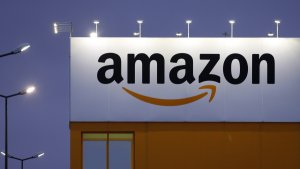What The Amazon Subscription Model Can Show Entrepreneurs
Could this be the revenue model for your business?

No matter whether a business has a top-quality product or offers its customers an unrivalled level of service, it is often the approach to sales that can be the difference between success and failure.
Joe Lennon, Partner at Wellers, talks to us about the Amazon subscription model and explains what value entrepreneurs can get out of adopting a similar recurring revenue approach.
In general there are two ways a business can operate, either by adopting a recurring or non-recurring model. There is not one best way, and there is certainly no ‘one size fits all’ approach. It must be determined by how the business is going to run in the long term, and what it offers.
What is Recurring Revenue?
Recurring revenue refers to the sales of a product or service that are expected to continue, rather than acting as a one-off purchase.
This approach allows entrepreneurs to design their business so that customers can subscribe to the service or product, facilitating a consistent stream of guaranteed and easily projected sales. Just think of Amazon Prime and Netflix as good examples.
Operating in this way means cashflow and profit projections are potentially far more predictable. It ensures the business, as well as potential investors or purchasers, can see more clearly how future sales will be generated, adding weight to the value of the business in the process.
Spotify, the music streaming service, is a fantastic example of a recurring revenue approach in action. It runs on a freemium subscription basis, which means that consumers have to ‘upgrade’ to access the added perks. This is on-going once signed up.
As there is little to no effort needed to keep purchasing, it makes it very easy for users to continue doing business with Spotify, this in turn leads to a high level of customer retention. Currently, Spotify has around 130 million customers that pay for premium accounts, clearly it’s doing something right.
By operating in this manner, the business can make confident projections as to likely future profits, ascertaining its own performance.
There are a few other ways in which a recurring revenue-based business can take shape, including auto-renewable subscriptions, sunk-money consumables, and long-term contracts. Each has its own list of benefits.
Amazon is Prime
One company that dominates in this area is Amazon and its unique Prime offering. Since Amazon was founded in 1994, the e-commerce marketplace has grown considerably.
The business is now worth more than a trillion dollars, is the second largest private employer in the US, and it has more than 100 million Prime customers. So, what has led to this meteoric success?
When Amazon Prime launched back in 2005, it offered unlimited free two-day shipping for an annual fee, as well as discounted next-day delivery rates. Over the years this offering has improved and expanded to include Prime Video, Prime Music and Audible Channels, plus access to Prime Day sales.
With the business already proving to be very popular amongst consumers thanks to its competitive pricing and stress-free returns policy, it would have been understandable for Jeff Bezos and his team to think they had cracked it.
So, why did Amazon decide to make the strategic decision to adopt a recurring revenue model? Whilst the initial approach was wide ranging, it didn’t turn a large profit, which is where Prime comes in.
Once a customer subscribes to the service and places their first order, they have become an Amazon Prime customer and are locked into paying for the privilege. They then benefit from all of the perks, and it encourages them to buy everything they need from Amazon moving forward.
This is evidenced by the fact that Prime members spend between double to quadruple of what non-Prime members do, according to Business Insider.
Because Prime contracts are for a year, it means that Amazon is able to plot and project its revenue forecasts based on the number of members using the service. It has also resulted in improved margins because, as discussed before, Prime members are likely to spend much more money using the website than non-Prime members.
Finally, this model delivers a high customer retention rate. After a customer has received all of the benefits of Prime, it is difficult to give them up. According to Consumer Intelligence Research Partners, 73 percent of Amazon Prime 30-day trial members convert to paying customers and 91 percent of those then renewed their contracts for the following year.
In Summary
The benefits of adopting a recurring revenue approach are clear and far reaching, offering businesses and entrepreneurs greater foresight and security, both of which are important when looking to increasing the value of a business.
This is especially important to an owner if the end goal is to perhaps to one day sell the business.
Those looking to convert their small business ideas into money makers may be interested in the Wellers’ Essentials guide: ‘Is it a Start-Up? – how to test your business idea’ download.
Thanks for signing up to Minutehack alerts.
Brilliant editorials heading your way soon.
Okay, Thanks!

